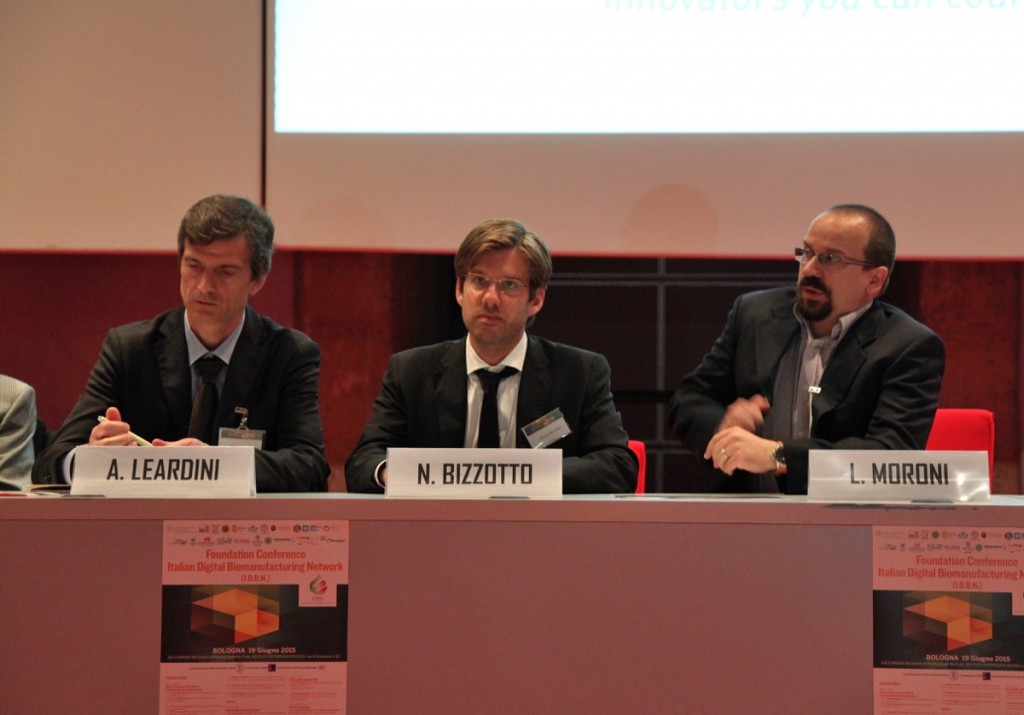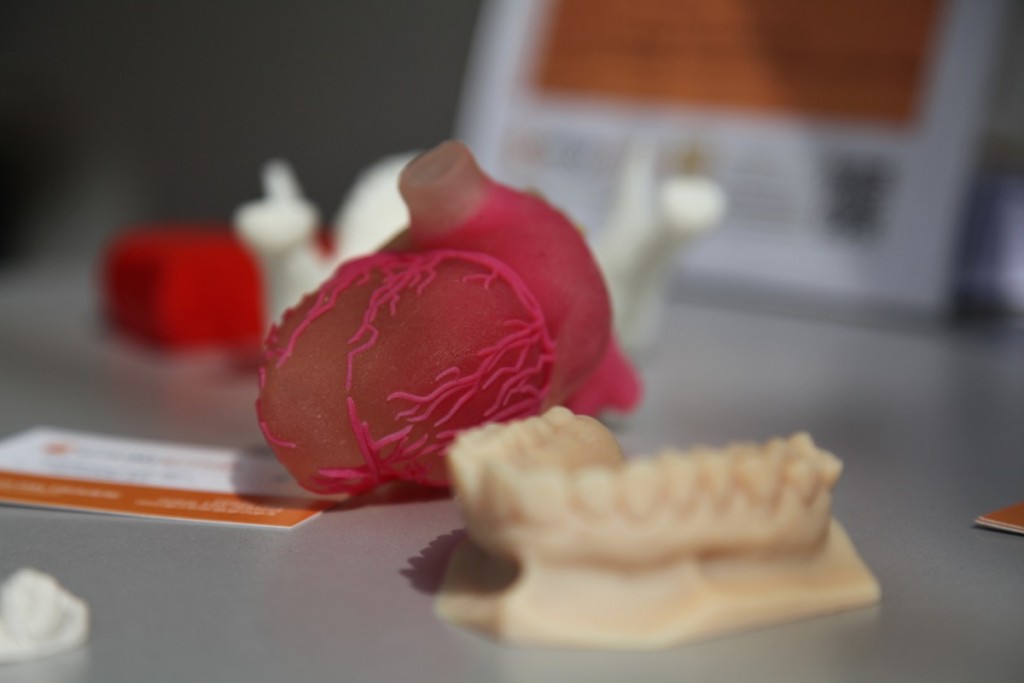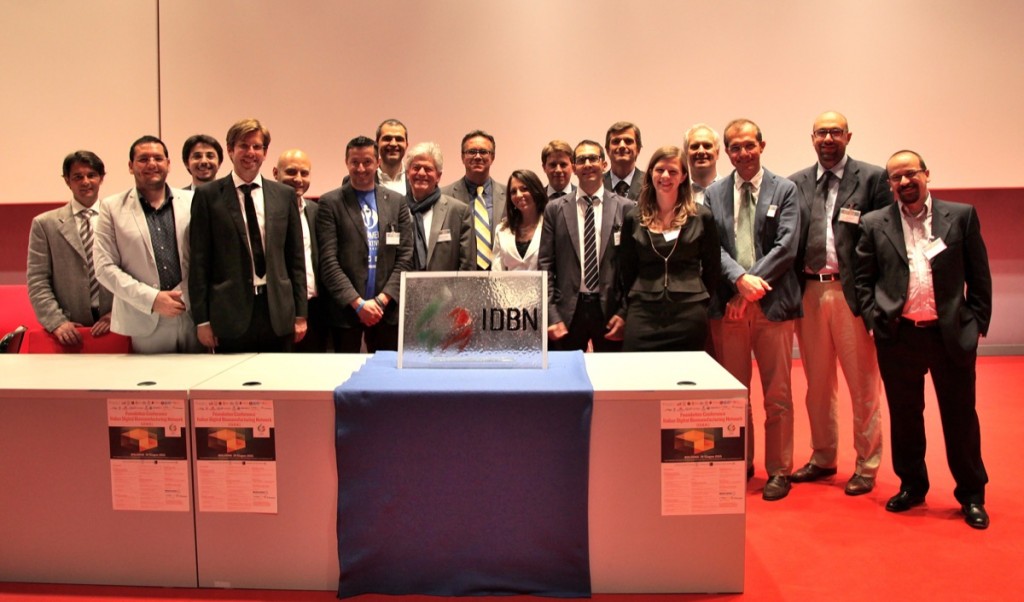I was recently asked to present at the Foundation Conference for IDBN, the Italian Digital Biomanufacturing Network, to be held at Rizzoli Hospital in Bologna, a leading orthopedic institution in Italy and worldwide. The conference, which was organized by my friend Nicola Bizzotto and a hand surgeon from the University Hospital in Verona, had the goal of organizing the many different approaches to medical 3D printing and bioprinting, while at the same time exploring synergies with the “traditional” additive manufacturing industry as whole.
The event turned out to be a huge success and I must admit that the level of the speakers was very high and even comparable – although smaller in numbers – to the recent Materialise World Conference, which has set the standard in this rapidly growing sector. Materialise, together with Stratasys (through its Italian distributor, Energy Group), was also the main sponsor of the event, which was a success, also, in terms of public participation. The 250-person main auditorium was completely full.
The main issue that the conference wanted to address was to find out exactly who was doing what. The fact that news comes out everyday with new achievements related to medical 3D printing makes it seem like medical 3D printing is something entirely new, while the truth is that 3D printing has been used in the medical field for almost two decades.
Many doctors and medical 3D printing service providers were present to contribute with their experience and confront themselves with startups and new associations making use of low-cost technologies to expand the reach of medical 3D printing. The most fascinating aspect of it all was that bioprinting actually represented a very significant part of the subjects discussed and was considered something that could offer significant advantages in the very near future.
The conference was opened by Rizzoli Orthopedic Institute’s (IOR) top management staff, including Scientific Director Dr. Marcacci, Sanitary Director Dr. Bianciardi and several top surgeons including Dr. Fornasari (one of the main supporters of 3D printing implementation at IOR), bone cancer expert Dr. Donati, and Dr. Leardini (Computer Assisted Medicine).
Dr. Bizzotto, then, took the stage to illustrate his reasons for creating IDBN and, especially, for including within IBDN the area of biomanufacturing. This concept was further explained by Dr. Moroni, who is based at the University of Maastrict and, yet, is probably Italy’s number one expert on bioprinting techniques. The potential for 3D printing in bioengineering was also explored later by Emanuele Christin, president of the Italian Bioengineering Association. Other talks by Dr. Auricchio and Dr. Romani explored how medical 3D printing is being studied at the Universities of Pavia and Verona.
The following session focused on more practical examples. These included the use of 3D printing for maxillo-facial surgery, illustrated by Dr. Toffanetti, and for neurosurgical preparation, in a talk held by Dr. Dallolio. He is one of Italy’s biggest experts as he has been implementing 3D printing in neurosurgery since 2001, when he organized the first Congress on Cranioplastics (followed by a second congress in 2014). He also founded the company Promev, through which he developed biomodels for aneurisms which reduced the incidence of surgical failures from 27% to below 2%.
The conference continued exploring the subject of surgical guides, with a talk by Paolo Parchi from the Orthopedic Clinic at the University of Pisa, and an analysis of the importance of radiology (since all advanced medical 3D printing necessarily starts from CT scans and MRIs), held by Dr. Poggi, Director of Radiology at Lodi Hospital. Two more talks, by Dr Beux and Dr. Antonucci, both from different sectors of the Italian Association of Radiologists, further analyzed this aspect of the technology.
One aspect that I feel is really on target in IDBN’s approach is that it is all-inclusive, meaning that a lot pf attention was paid to the role of associations and not-for-profit organization operating in the medical 3D printing field. With this in mind, Giancarlo Orsini, co-fonder of OpenBiomedical, took the stage to explain how the open source association has been working to create a global network focused on bringing the advantages of 3D printing to the remotest areas of the planet and, thus, to those who need them more.
What we have defined as the “traditional Additive Manufacturing industry” was represented by Enrico Annacondia, coordinator of the Italian Association for Additive Technologies (AITA), while the medical 3D printing startup experience was illustrated by Massimiliano Romiti founder of 3D Medical. Finally, Marilena Pavarelli spoke about how 3D printing is playing a growing role in the Exposanità conference, which her company, Senaf, organizes yearly.
The last session was dedicated to how the manufacturing industry can work together with the medical sector, reciprocally benefiting each other. What is most fascinating to me, in fact, is that, the processes of additive manufacturing products, as well as organs, are, in a way, almost identical, which means that advances in one field can benefit the other and vice versa. In this session, Lucio Ferranti, CEO of Energy Group, spoke about the possibilities offered by multi-material Stratasys machines, while Veronica Ceccato, from Materialise described Materialise’s role supporting the medical industry since the company’s very beginnings.
The last talk, well into lunchtime, dealt with the most complex area of medical 3D printing: the legal aspects. Maria Livia Rizzo, founder of Legal3DPrinting and legal medicine expert discussed some of the issues that the legal sector will face in the near future. In fact, the subject is so complex that I got in touch with Maria after the conference for a more in depth discussion on these issues, which I will tell you all about in another article, soon to air on this channel.
In the meantime, since I proudly became one of the founding members of IDBN, I will do my part to ensure that this experience can be repeated soon and to find out what progress has been made, because the great thing about medical 3d printing, and all 3D printing as a whole, is that progress is made every day.








